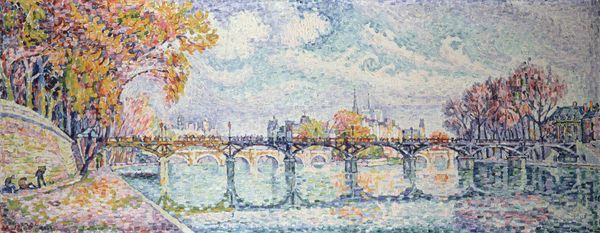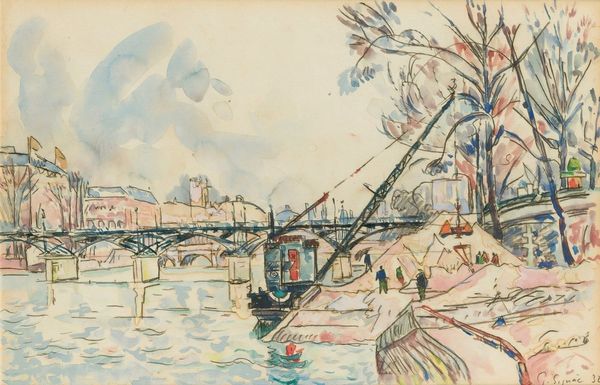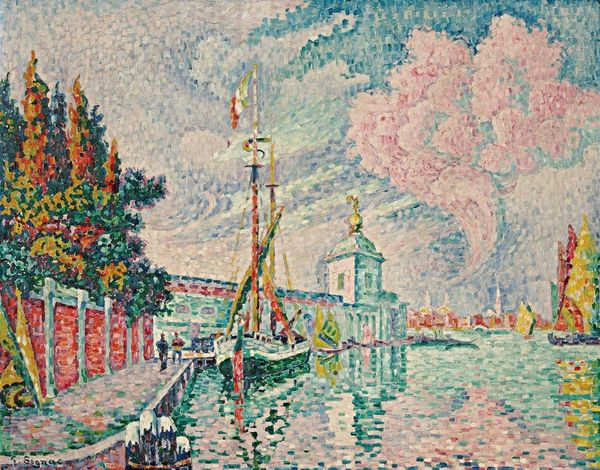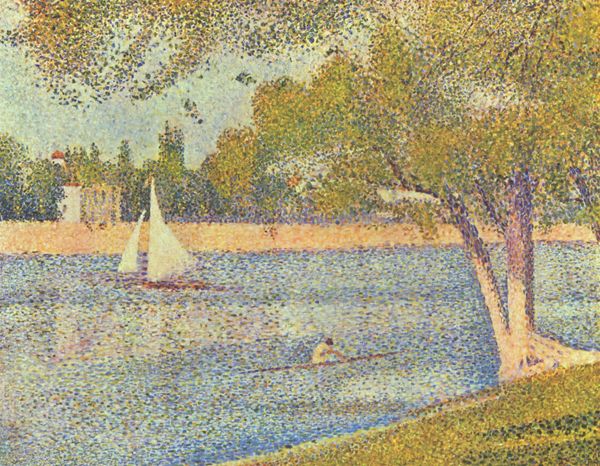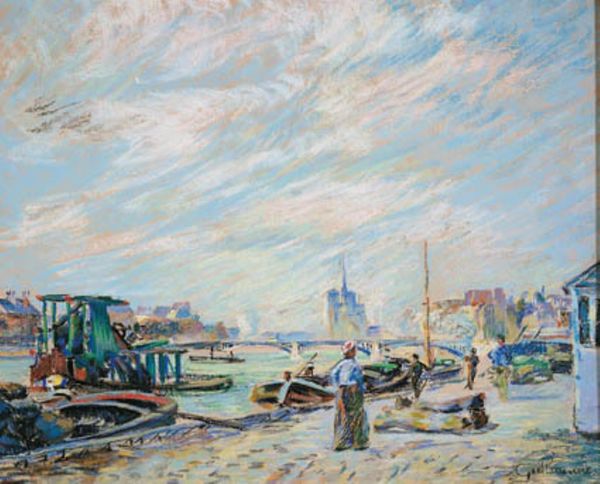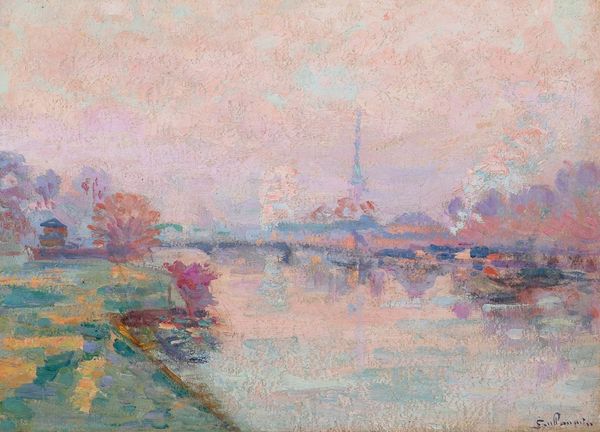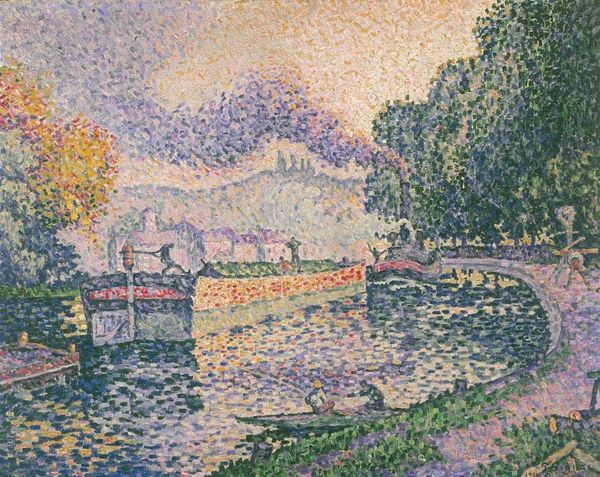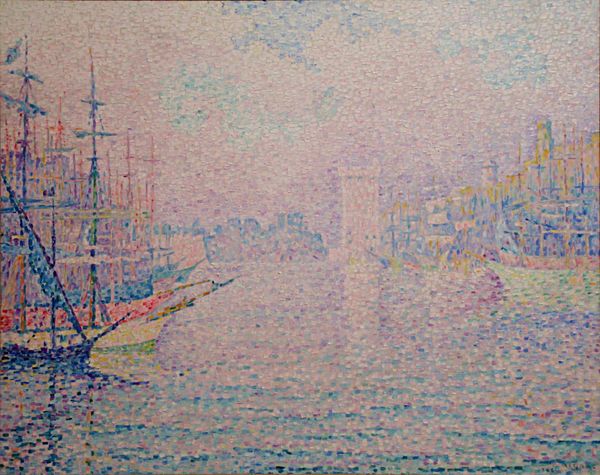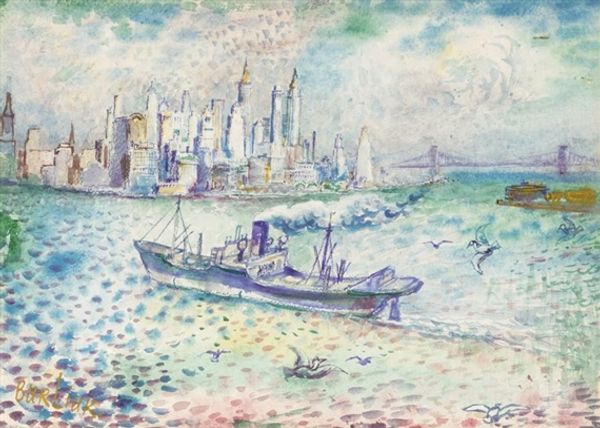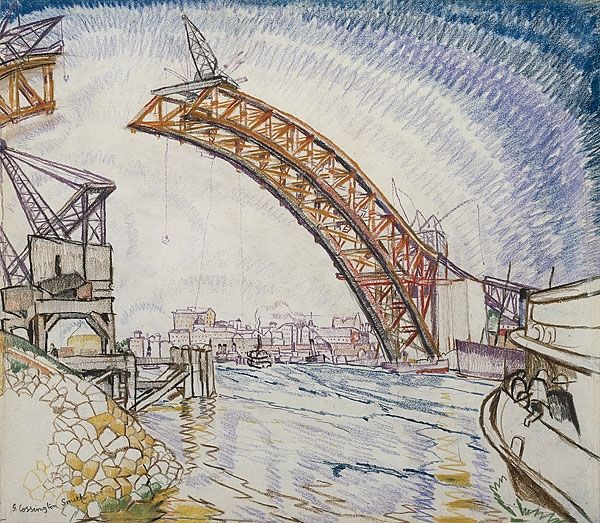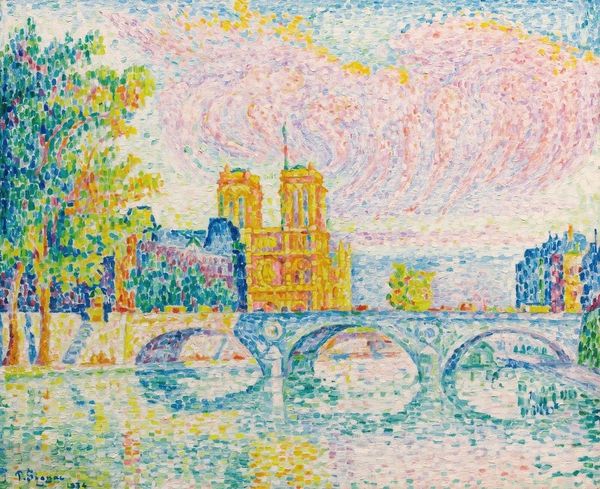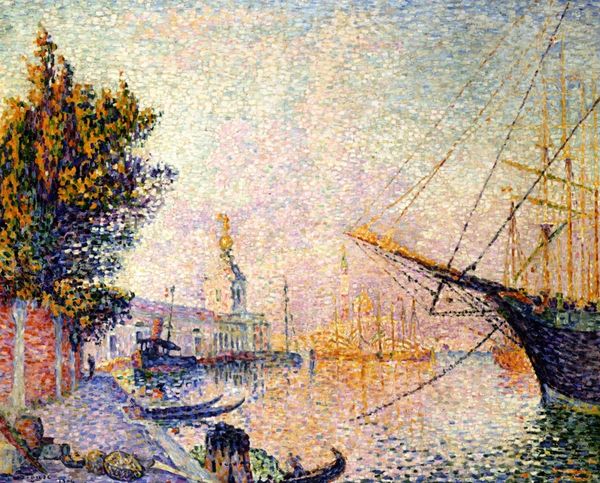
Copyright: Public Domain: Artvee
Curator: I find the almost naive application of paint so joyful here, like confetti settled on a cityscape. What’s your take? Editor: It is ebullient, definitely. Let's explore "Pont Des Arts," painted in 1925 by Paul Signac, an eminent figure in the Neo-Impressionist movement. He deployed oil paint using an impasto technique to create this vista. It's an image that speaks to the enduring symbolism of Paris itself. Curator: For me, the Pont des Arts is much more than a mere bridge. Note how Signac portrays the river as a place of work. See the figures loading goods onto a boat, while the industrial crane looms, hinting at a tension between leisure and labour that underscores much of 1920s Parisian life. It hints at a moment of intense change for workers’ rights in French society, with the growth of socialism, all echoed within a landscape painting. Editor: You bring a needed critical context! From my vantage point, there's a cultural resonance in this depiction of the bridge. Consider how bridges, across various mythologies and cultural traditions, signify transition and connection. The Pont des Arts, historically linking the Louvre and the Institut de France, speaks of a symbolic conduit between art, intellect, and political power, right? Curator: Precisely! The composition isn't simply pretty. Its colors create an unsettling tension – all those light dots somehow creating a mood that hints at something darker. One might even read this painting through the lens of post-war disillusionment, as Paris was being radically transformed and commodified following the trauma of World War One. Editor: I see that shadow, yet I’m still drawn to the repeated visual motif of ‘points’ connecting this work – dots, leaves, bridge arches – reinforcing notions of linkages both tangible and conceptual, inviting viewers to bridge divides and reflect upon the world's interconnected nature. Curator: Yes, this visual coherence speaks to Neo-Impressionism's emphasis on order, almost against its subject. What appeared radical can reveal a deeply conservative structure and underlying politics, I think. Editor: The brilliance lies in the layers, inviting ongoing discourse across time. Curator: A perfect example of the richness revealed by interdisciplinary perspectives!
Comments
No comments
Be the first to comment and join the conversation on the ultimate creative platform.
